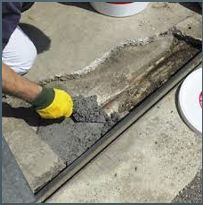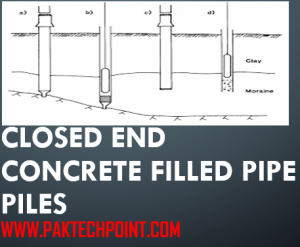This article is about PROCEDURE FOR ASPHALT CONCRETE PAVING AND ROAD ACTIVITIES and focusing to the engineers, technicians and supervisors. You will find lot of documents related to this article. Just navigate our website www.paktechpoint.com and find more articles. Please! Do not forget to subscribe our You tube channel also. Thanks in Advance.
PLEASE SUBSCRIBE OUR PAKTECHPOINT YOUTUBE CHANNEL
PROCEDURE FOR ASPHALT CONCRETE PAVING AND ROAD ACTIVITIES
This Procedure describes the steps to be taken and sequence of events necessary to enable satisfactory completion of each activity.
Code & Standards Used for ASPHALT CONCRETE PAVING AND ROAD ACTIVITIES
SAES-Q-006 : Asphalt and Sulfur Extended Asphalt Concrete Paving
SAES-A-114 : Excavation and backfill
SABP-Q-010: Mix design and Construction of Sulfur Extended Asphalt Concrete
AASHTO : AASHTO guide for Design of Pavement Structures. American Association of State highway and Transportation Officials, 1993.
AASHTO M 17: Standard Specification for mineral Filler for Bituminous Paving Mix
AASHTO M 156: Standard Specification for Requirements for Mixing Plants for HotMixed, Hot-laid Bituminous Paving Mixture.
AASHTO T 49: Standard Method of Test for Penetration of Bituminous Materials.
AASHTO T 51: Standard method of Test for Ductility of Bituminous Materials.
AASHTO T 53 : Standard Method of Test for Softening Point of Asphalt (Bitumen) and Tar in Ethylene Glycol (Ring and Ball).
AASHTO T 180 : Moisture Density Relation of Soils using a 10-lb (4.54kg) Rammer And an 18 inch (457 mm) drop.
AASHTO T 193: California Bearing Ratio
ASTM C88 : Test Method for Soundness of Aggregates by use of Sodium Sulfate or Magnesium Sulfate.
ASTM C117 : Test Method for Materials Finer than 0.075mm (no.200) sieve in Mineral Aggregates by Washing.
ASTM C131 :Test Method for Resistance to Degradation of Small-size Coarse Aggregate by Abrasion and Impact in the Los Angeles Machine.
ASTM C136 : Test Method for Sieve Analysis of Fine and Coarse Aggregates.
ASTM C142 : Test Method for Clay Lumps and Friable Particles in Aggregates.
ASTM C535 :Test method for resistance to Degradation of Small-large Coarse Aggregate by Abrasion and Impact in Los Angeles machine.
ASTM D75: Particles for Sampling Aggregates.
ASTM D4791: Test method for Flat particles or Elongated Particles or Flat and Elongated particles in Coarse Aggregates.
ASTM D5 : Standard Test method for Penetration of Bituminous Materials.
ASTM D36: Standard Test for Method of Softening Point of Bituminous Materials.
ASTM D113: Standard Test Method for Ductility of Bituminous Materials.
ASTM D1559: Test Method for Resistance to Plastic Flow of Bituminous Mixtures using Marshall Apparatus.
ASTM D2041 : Test Method for Theoretical Maximum Specific Gravity and Density of Bituminous Paving Mixtures.
ASTM D2172 : Test Method for Quantitative Extraction of Bitumen from Bituminous Paving Mixture.
ASTM D2726 : Test Method for Bulk Specific Gravity and Density of Non-Absorptive Compacted Bituminous Mixtures.
ASTM D2726 : Standard Test Method for Viscosity Determination of Asphalt at Elevated temperature using Rotating Viscometer.
ASTM PS 90-97 : Provisional Test Method for Asphalt Content of Hot-mix Asphalt by the Ignition Method.
ASTM C5 :Standard Specification for Quicklime for Structural Purposes.
ASTM C150: Standard Specification for Portland Cement.
ASTM D1156 : Test Method for Density and Unit Weight of Soil in place by the Sand-cone Method.
ASTM D1157 : Test Method for Laboratory Compaction Characteristics of Soil Using Modified effort (56,000 ft-lbs/ft3 -2,700 km/m3).
ASTM D2419: Test Method for CBR of Laboratory Compacted Soil.
ASTM D2922: Test Method for Density of Soil and Soil aggregate in Place by Nuclear Methods (Shallow Depth).
ASTM D4253 : Test Method for Maximum Index Density and Unit Weight of Soils using a Vibratory Table.
ASTM D4254 : Test Method for Minimum Index Density and Unit Weight of Soils
TASTM D4318 : Test Method for Liquid Limit, Plastic Limit and Plasticity index of soils. and Calculation of Relative density.
ANSI/ASSE A10.12: Safety Requirements for Excavation
GI 1021.000 : Street and Road Closure, Excavation Reinstatement and Traffic
Preparation of sub grade
• Perform subgrade preparation. Fill all depressions, level the surface, remove all unsuitable materials and replace with materials approved by Saudi Aramco.
• Compact the subgrade according to the requirements in SAES-A-114 Section 6.3.1.1 and 6.3.2.5 (ARAMCO STANDARD)
• Following compaction, check for air holes, ruts, soft spots and other unsuitable subgrade conditions. Confirm compliance to Saudi Aramco Standard requirements.
• Where rolling is required, any areas inaccessible to a roller will be compacted by either mechanical or hand tamper until the Saudi Aramco requirements had been attained.
• Before placing base course layer, check conformance to alignment, grade, slopes and cross- sections shown on IFC drawings and as required by the Project Specifications.
Read more
PLEASE SUBSCRIBE OUR PAKTECHPOINT YOUTUBE CHANNEL







